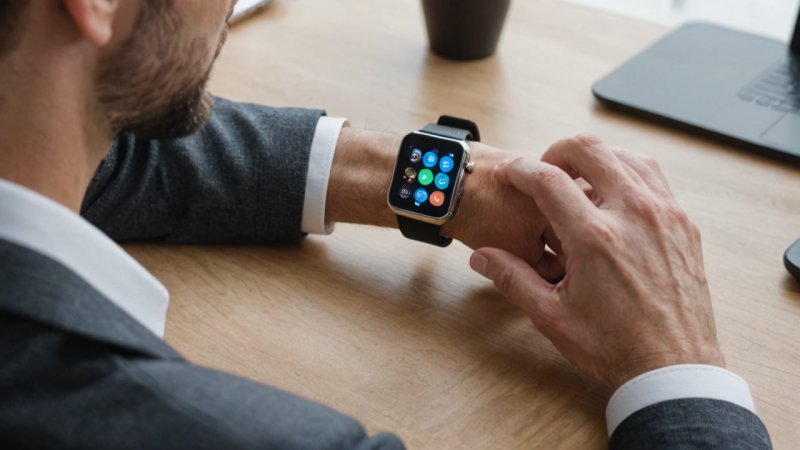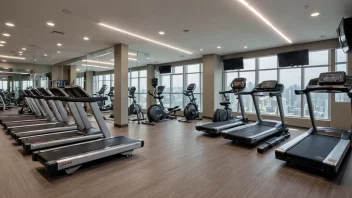In an age where technology permeates every aspect of life, maintaining a healthy work-life balance has become increasingly challenging. The rise of wearable technology offers an innovative solution to this dilemma, empowering individuals to manage their time, health, and productivity in a more efficient manner. From smartwatches that track your physical activity to fitness bands that monitor your stress levels, wearables have the potential to enhance our daily lives significantly. In this article, we will explore how these devices can help you achieve a harmonious balance between work and personal life, providing practical tips and insights on leveraging technology for personal well-being.
Understanding Work-Life Balance
Before delving into how wearables can assist in achieving work-life balance, it’s essential to understand the concept itself. Work-life balance refers to the equilibrium between personal life and professional responsibilities. A healthy balance is crucial for mental health, productivity, and overall well-being. An imbalance can lead to stress, burnout, and dissatisfaction in both personal and professional realms. By utilizing wearables, you can gain insights and tools to help maintain this balance effectively.
The Role of Wearables in Managing Work-Life Balance
Wearable devices are designed to be integrated into your daily routine, providing real-time data and feedback. Here’s how they can contribute to a healthier work-life balance:
1. Activity Tracking
Many wearables come equipped with fitness tracking capabilities, allowing you to monitor your physical activity levels throughout the day. By keeping track of your steps, workouts, and overall movement, you can ensure that you remain active, even during busy workdays. Regular physical activity is linked to reduced stress and improved mood, which is crucial for maintaining balance.
- Set Daily Goals: Use your wearable to set achievable daily activity goals. Aim for a certain number of steps or workout minutes.
- Reminders to Move: Many devices offer reminders to stand up or take a short walk, which can help break prolonged periods of sitting.
2. Stress Management
Wearables equipped with heart rate monitors and stress management features can help you keep tabs on your stress levels throughout the day. Monitoring physiological responses to stress can empower you to take proactive steps to mitigate it.
- Mindfulness and Breathing Exercises: Many wearables offer guided breathing exercises that can help reduce stress in real-time.
- Identifying Stress Triggers: By tracking your heart rate variability, you can identify patterns or triggers that lead to increased stress.
3. Sleep Tracking
Quality sleep is often overlooked but is a critical component of work-life balance. Wearables can provide valuable insights into your sleep patterns, helping you understand how to improve your sleep hygiene.
- Sleep Analysis: Use your wearable to track sleep quality, duration, and cycles, which can help you identify areas for improvement.
- Bedtime Reminders: Setting reminders for a consistent bedtime can help ensure you get enough restorative sleep.
4. Time Management
Wearables can also assist in managing your time effectively. Smartwatches and fitness bands often come with features that help you schedule reminders and tasks, ensuring you stay on top of both work and personal commitments.
- Calendar Syncing: Sync your calendar with your wearable to receive notifications about upcoming meetings or deadlines.
- Task Lists: Use your device to create and manage daily task lists, helping you prioritize effectively.
Choosing the Right Wearable for Work-Life Balance
With a plethora of wearable devices available in the market, selecting the right one can be overwhelming. Here are some considerations to guide your choice:
1. Purpose and Features
Identify your primary goals. Are you more focused on fitness tracking, stress management, or simply staying organized? Choose a wearable that aligns with your objectives.
2. Compatibility
Ensure that the wearable you choose is compatible with your smartphone and other devices. This will enhance the functionality and ease of use.
3. Comfort and Design
Since wearables are typically worn throughout the day, consider the comfort and design. Look for options that are lightweight and aesthetically pleasing.
4. Battery Life
Battery life is an essential factor. A device that requires frequent charging may disrupt your daily routine.
Integrating Wearables into Your Daily Routine
Once you've chosen a wearable, it’s important to integrate it into your daily life effectively. Here are some tips on how to do this:
1. Set Clear Goals
Define what you want to achieve with your wearable. Whether it’s increasing daily steps, improving sleep quality, or managing stress, having clear goals will keep you focused.
2. Create a Routine
Incorporate your wearable into your daily routine. For example, check your activity levels during lunch breaks or review your sleep metrics each morning.
3. Engage with Insights
Many wearables offer insights and feedback based on your data. Take the time to review this information and adjust your habits accordingly.
Success Stories: Real-Life Examples
To illustrate the effectiveness of wearables in achieving work-life balance, let’s look at some success stories:
John’s Journey: After getting a fitness tracker, John, a busy marketing manager, started tracking his daily steps. He found that he was only walking around 3,000 steps a day. By setting a goal of 10,000 steps, he incorporated short walks during work breaks and noticed a significant decrease in his stress levels.
Mike’s Mindfulness: Mike, a software developer, was struggling with work-related stress. He started using a smartwatch with stress management features. By practicing guided breathing exercises during stressful moments, he was able to stay calm and focused, leading to increased productivity.
Challenges and Considerations
While wearables offer numerous benefits, there are also challenges to be aware of:
- Over-Reliance: Avoid becoming overly dependent on technology. Use wearables as a tool to aid your balance, not as the sole solution.
- Information Overload: With access to constant data, it's easy to feel overwhelmed. Focus on key metrics that truly matter to you.
- Privacy Concerns: Be mindful of the data you share and ensure your wearable has robust privacy protections in place.
Conclusion
In conclusion, wearables present an invaluable opportunity to enhance work-life balance through their multifunctional capabilities. By tracking physical activity, managing stress, analyzing sleep, and assisting with time management, these devices empower users to take control of their well-being. With careful selection and effective integration into daily routines, wearables can significantly contribute to achieving a harmonious balance between professional and personal life. As technology continues to evolve, the potential for wearables to enhance our lives will only grow, making it essential to stay informed and adapt to these innovations.






